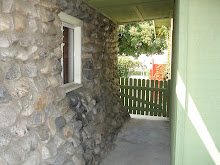THE FOLLOWING WAS TAKEN FROM THE OFFICE OF HISTORIC RESOURCES SITE. THIS IS ONLY HALF OF THE MYTHS LISTED.
MYTH #1: Historic Designation Will Reduce My Property Values.
FACT: Study after study across the nation has conclusively demonstrated that historic designation and the creation of historic districts actually increase property values. Why? In part, historic designation gives a neighborhood or an individual historic site a cache that sets it apart from ordinary properties. Many buyers seek out the unique qualities and ambiance of a historic property. Historic district designation gives potential homebuyers two rare and economically valuable assurances: that the very qualities that attracted them to their neighborhood will actually endure over time, and that they can safely reinvest in sensitive improvements to their home without fear that their neighbor will undermine this investment with a new “monster home” or inappropriate new development.
MYTH #2: If my property is designated as a historic site, I won’t be able to change it in any way, and I don’t want my property to become like a museum.
FACT: Owners of designated historic structures may make very significant changes to their structures. Historic preservation laws, at their essence, are not meant to prevent change, but, rather, to manage change. The tool to manage change is the Secretary of Interior’s Standards for Rehabilitation, the nationally accepted benchmark for evaluating changes to historic structures. The Standards don’t require that every element of a historic site remain intact: you need not keep every doorknob! However, the most significant, or “character-defining”, historic elements of a property should be retained. New additions to the historic property are allowed, but should be compatible with the site’s historic architecture. The Standards urge the repair of deteriorated historic features, but do allow for replacement where the severity of deterioration leaves no other option.
MYTH #3: Preservation is an un-American violation of property rights
FACT: Historic preservation laws no more infringe on property rights than do many other laws and private rules that Americans have long accepted. Though everyone likes to believe “my home is my castle and I can do whatever I want,” this statement simply doesn’t reflect reality. Zoning laws prevent you from replacing your single-family home with an apartment building or a five-story vertical mansion. We should all be happy that such laws prevent our neighbor from putting a landfill or a skyscraper behind our back fence. If you live in a condominium (or an Orange County gated community), your property rights are limited by Covenants, Conditions, and Restrictions (CC & Rs), documents that can legally prevent you from owning a pet, washing a car in your driveway, or having a basketball hoop over the garage. CC &R’s restrictions are far more onerous than historic preservation laws, yet are commonly accepted even by vocal property rights advocates.
MYTH #4: Preservation is only for the rich and elite, and for high-style buildings.
FACT: Historic preservation isn’t just about house museums anymore. Today’s preservation movement is increasingly diverse: here in Los Angeles, the two newest Historic Preservation Overlay Zones (HPOZs) are in Pico-Union and Lincoln Heights, home to economically and ethnically varied populations. Preservation today also focuses not just on grandiose architectural landmarks, but on more modest sites of social and cultural significance. Just look at the small Ralph J. Bunche House in South Los Angeles, boyhood home of the pioneering African-American diplomat, and Little Tokyo’s Far East Café, a beloved gathering place for the city’s Japanese-American community – both recently restored. Or, consider a current preservation effort to save the modest Vladeck Center, a Boyle Heights building that was the center of the Jewish labor and immigrant resettlement movements of the 1930s. Such sites underscore that preservation can be about the “power of place” found at sites containing rich social and cultural meaning.
MYTH #5: Preservation is more expensive than new construction
This is certainly true at times, but, in FACT, historic preservation is typically more cost effective than new construction. Why? Historic buildings certainly do sometimes need upgrades, but these are usually less expensive than the costs of building all-new foundations, structural systems, roofs and building finishes. The National Trust for Historic Preservation reports that in Chicago, where the public school system is now spending $2.5 billion to upgrade facilities, bare-bones new construction is costing $155 per square foot -- but renovation is costing just $130. Here in Los Angeles, the State of California learned the potential savings from historic preservation in comparing the construction of two State Office Buildings: the new Ronald Reagan State Office Building on Spring Street at 3rd St., and the Junipero Serra State Office Building just two blocks away on Broadway at 4th St., in the renovated former flagship location of the Broadway Department Store. The historic renovation not only reused and reinvigorated an important landmark from 1914, but it saved taxpayers money by delivering office space at about half the cost per square foot of the all-new Reagan building just a few years before.
Saturday, July 5, 2008
Subscribe to:
Post Comments (Atom)







No comments:
Post a Comment